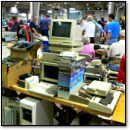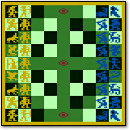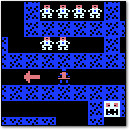June 8th, 2017 by Benj Edwards
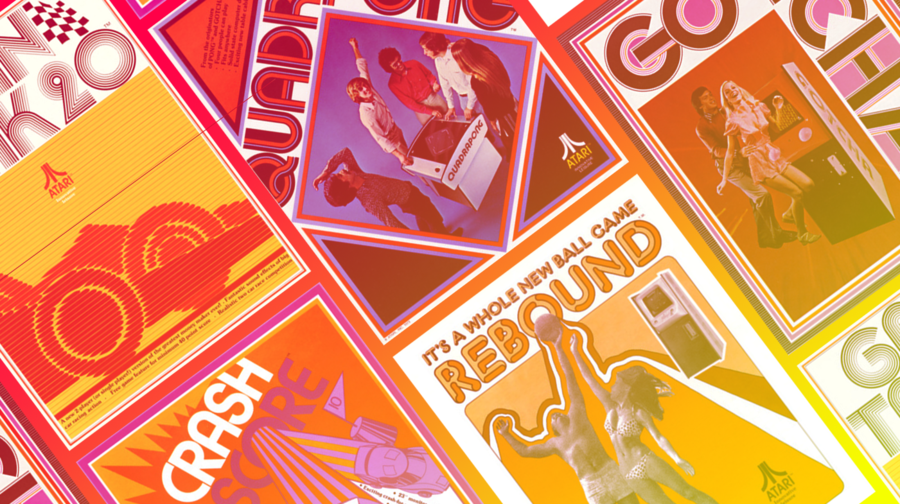
Rolling Stone recently launched a dedicated gaming site called Glixel, and just recently, EGM alum and Glixel’s General Manager, John Davison (of whom I am a big fan), asked me to write something for the site.
So I did. Atari turns 45 this month, and I thought it would be fun to look back at some of Atari’s early coin-op titles that very few people have heard of. The result is called “Atari’s Forgotten Arcade Classics,” and you can read it now over at Glixel.
If I weren’t so busy with other projects, I’d dive more in-depth into the origins of Atari — I certainly have a lot to say about it. But that will have to wait until another time. Until then, I hope you enjoy this piece.
Posted in Gaming History, Retrogaming | 5 Comments »
Tags: 1972, anniversaries, arcade, Atari, coin-op, EGM, forgotten, Glixel, John Davison, Rolling Stone
June 8th, 2017 by Benj Edwards

I mentioned this in my most recent Retro Scan, but I figured this was worth repeating in its own post.
Chuck E. Cheese’s Pizza Time Theatre launched 40 years ago last month — on May 16, 1977. To celebrate the anniversary, I wrote a long feature about the origins of the pizza chain for FastCompany that they published last week.
In the piece, you can learn about how Chuck E. Cheese was originally supposed to be a coyote, read about rat-related intrigue, and glean some of the visionary genius of Nolan Bushnell, who saw the chain as a way to bring arcade video games to the mainstream — as well as scratching a fundamental itch of human nature. It worked.
Hope you enjoy it.
Posted in Gaming History, Retrogaming | 5 Comments »
Tags: 1977, Atari, Chuck E. Cheese, FastCompany, freelance work, Gene Landrum, Nolan Bushnell, Pizza, Pizza Time Theatre
June 6th, 2017 by Benj Edwards

After promising this for years, it’s time to finally release the Prodigy Preservation Project’s reverse-engineering tools. They’re not much, and they’re written in Python, but this code is the means by which I’ve been extracting fossilized Prodigy pages from STAGE.DAT files for the past few years.
I have been delaying announcing their availability because I was hoping Jim Carpenter, the author of these tools (and my partner on the Prodigy Preservation Project) would have more time to add more functionality and documentation, but he has not made any changes to the code since late 2015.
Yeah, I know that was almost two years ago. I’m sorry — things move slowly in ProdigyLand.
So here it is, everybody. Have at it. I hope you can help us improve them.
https://github.com/jim02762/prodigy-classic-tools
Just let me know what you find, and I’ll add it to my Flickr galleries.
Posted in VC&G Announcements | 6 Comments »
Tags: Flickr, Jim Carpenter, online services, Prodigy, Prodigy Preservation Project
June 6th, 2017 by Benj Edwards
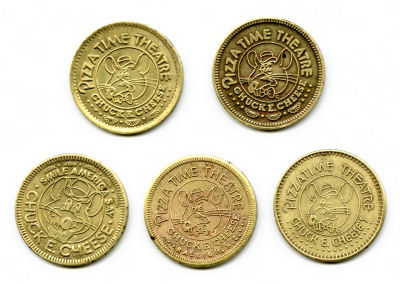 Five early 1980s Pizza Time Tokens from Benj’s Collection
Five early 1980s Pizza Time Tokens from Benj’s Collection
Chuck E. Cheese’s Pizza Time Theatre launched 40 years ago last month — on May 16, 1977. To celebrate the anniversary, I wrote a long feature about the origins of the pizza chain for FastCompany that they published last week.
While researching the article, I recalled my childhood token collection (pseudo numismatic, as they say) that likely had a few vintage Chuck E. Cheese specimens. After checking, sure enough, I found five authentic Pizza Time game tokens dated from the years 1980, 1982, and 1983.
[ Continue reading [ Retro Scan ] Chuck E. Cheese Tokens and Tickets » ]
Posted in Gaming History, Regular Features, Retro Scan of the Week, Retrogaming | 6 Comments »
Tags: 1980, 1982, 1983, Chuck E. Cheese, Pizza Time Theatre, Retro Scan, Tickets, Tokens
May 16th, 2017 by Benj Edwards
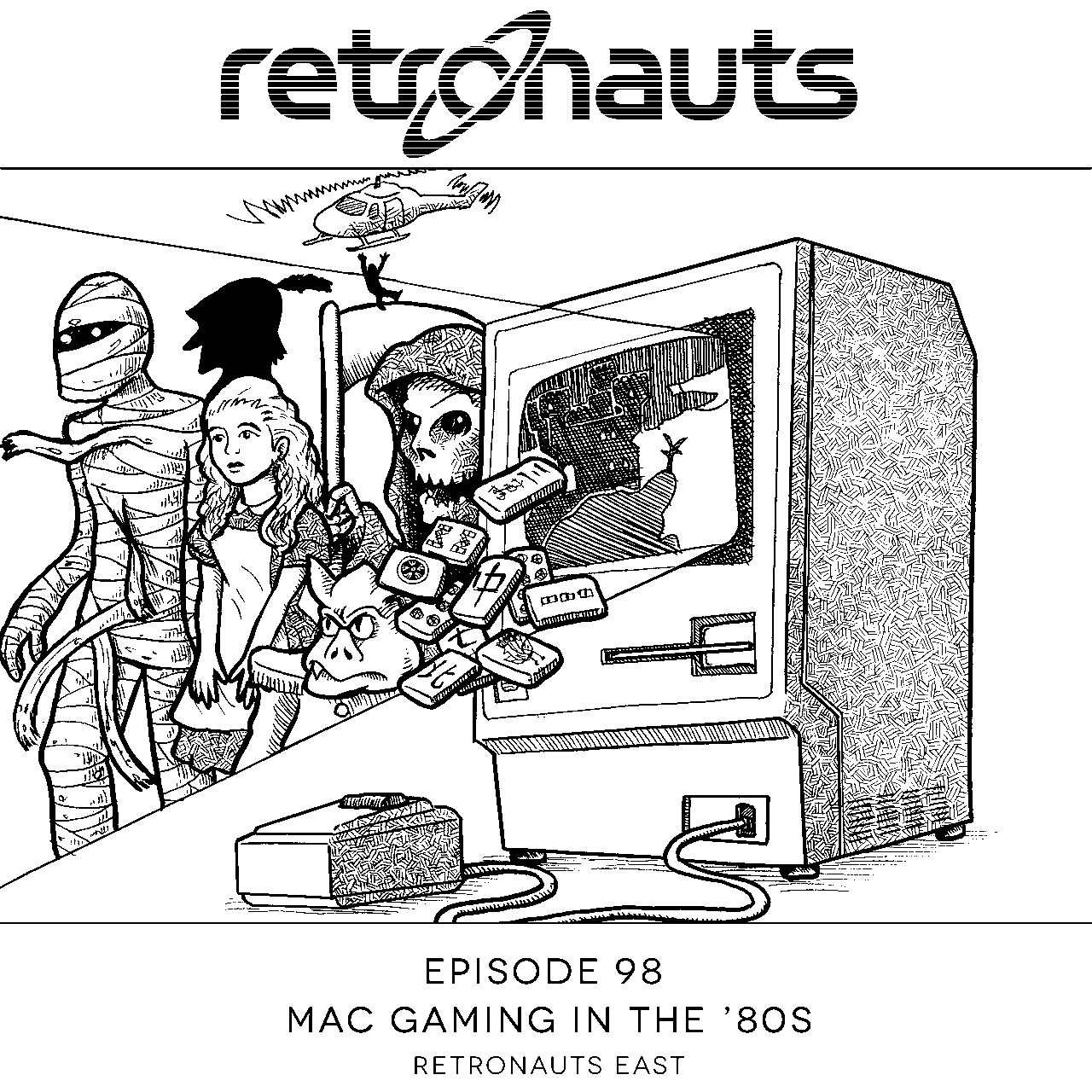
Since February, I’ve been appearing on episodes of Retronauts, a long-running retro gaming podcast traditionally hosted by Jeremy Parish and Bob Mackey. Retronauts traces its origins to the now defunct 1UP.com, but it has moved along with Jeremy wherever he goes.
And that includes a move across the country: About five years ago, Jeremy relocated to sunny Raleigh, NC from San Francisco. After resigning from his editor-in-chief position at USGamer.net late last year, Jeremy decided to rely on Patreon to fund Retronauts as a full-time project.
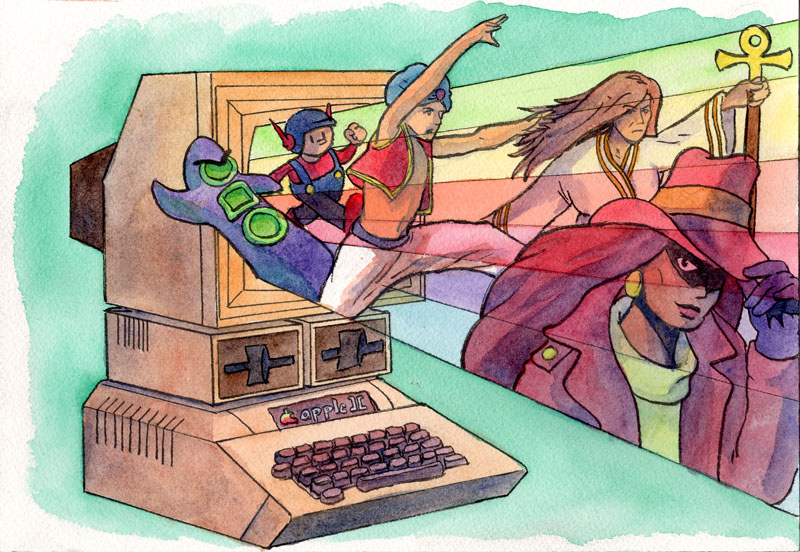 There’s only one problem: Bob Mackey is still located on the west coast, and Jeremy can’t afford to fly out there every time he wants to record a show. So while Bob still creates episodes on the west coast, Jeremy started up a “Retronauts East” wing of the show featuring a local crew of regulars.
There’s only one problem: Bob Mackey is still located on the west coast, and Jeremy can’t afford to fly out there every time he wants to record a show. So while Bob still creates episodes on the west coast, Jeremy started up a “Retronauts East” wing of the show featuring a local crew of regulars.
Fortunately, I am a Raleigh native, and I still live here. So the Retronauts East roster includes both myself and Ben Elgin, a Hillsborough, NC software engineer and a veteran of Jeremy’s Gamespite forums.
Since then I’ve been on five episodes (with another micro episode on the way), and it’s been a blast. Jeremy is a gin aficionado, and we typically drink a gin and tonic before or during the show, which is why you may hear high-resolution ice clinking in the background.
Here’s a run-down of the episodes I’ve appeared on so far:
Episode 87: Apple II Games
Episode 91: Early Sega Arcade Games
Episode 95: Early Batman Games
Micro 59: Atari Swordquest
Episode 98: Mac Gaming in the 1980s
There’s more to come. So stay tuned and enjoy.
Posted in Computer Games, Computer History, Gaming History, Macintosh, News & Current Events, Retrogaming, VC&G Announcements, Vintage Computing | No Comments »
Tags: Apple, Apple II, Atari, Batman, Ben Elgin, Bob Mackey, freelance work, Jeremy Parish, Macintosh, Retronauts, Sega, Swordquest
May 15th, 2017 by Benj Edwards
Note: this article was originally published on 1UP.com on May 15, 2007 under the title “Videogames Turn Forty.” (Original URL: http://www.1up.com/do/feature?pager.offset=0&cId=3159462).
Since 1UP is no longer with us, I decided to republish the article here for historical reference. I have learned quite a bit about video game history in the decade since this was originally published, and naturally some of my conclusions have changed. But this is still a great overview of the work done by Baer, Harrison, and Rusch in the 1960s. I plan to republish my other 1UP articles on VC&G as well in the near future. — Benj
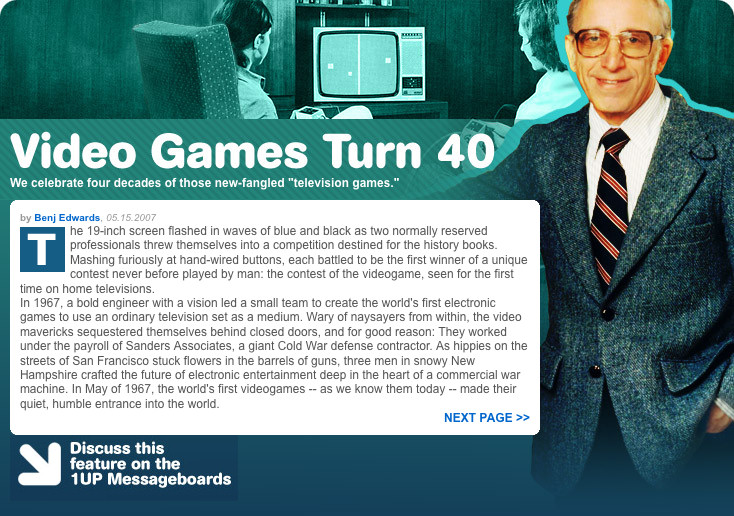
The nineteen-inch screen flashed in waves of blue and black as two normally reserved professionals threw themselves into a competition destined for the history books. Mashing furiously at hand wired buttons, each battled to be the first winner of a unique contest never before played by man: the contest of the video game.
 In 1967, a bold engineer with a vision led a small team to create the world’s first electronic games to use an ordinary television set as a medium. Wary of naysayers from within, the video mavericks sequestered themselves behind closed doors, and for good reason: they worked under the payroll of Sanders Associates, a giant Cold War defense contractor.
In 1967, a bold engineer with a vision led a small team to create the world’s first electronic games to use an ordinary television set as a medium. Wary of naysayers from within, the video mavericks sequestered themselves behind closed doors, and for good reason: they worked under the payroll of Sanders Associates, a giant Cold War defense contractor.
As hippies on the streets of San Francisco stuck flowers in the barrels of guns, three men in snowy New Hampshire crafted the future of electronic entertainment deep in the heart of a commercial war machine. In May of 1967, the world’s first video games — as we know them today — made their quiet, humble entrance into the world.
[ Continue reading [ VC&G Anthology ] Video Games Turn Forty (2007) » ]
Posted in Gaming History, Retrogaming, VC&G Anthology | No Comments »
Tags: 1967, 1972, 1UP.com, 2007, Bill Harrison, Bill Rusch, freelance work, Magnavox, New Hampshire, Odyssey, Ralph Baer, Sanders Associates, VC&G Anthology, video game history
April 24th, 2017 by Benj Edwards
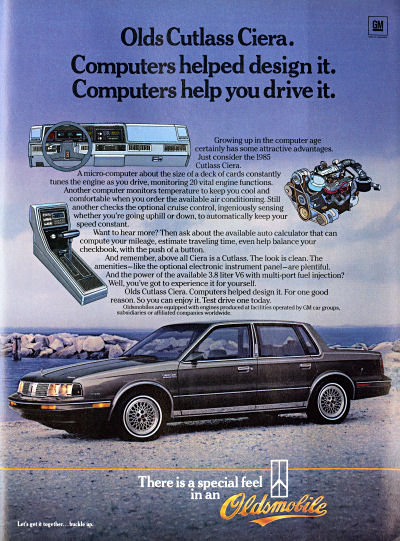 Our 1984 model: Only 3,000 superfluous wheel spokes to clean
Our 1984 model: Only 3,000 superfluous wheel spokes to clean
Microprocessor technology hit the automotive world in a big way in the 1970s and 80s — car manufacturers began integrating microcontrollers into their products, and that move paid off with features like increased fuel efficiency, better cruise control, and more accurate climate control.
Some computer-related advantages in the automotive industry predated the invention of the microprocessor, however. In 1964, GM began using CAD software on IBM mainframes to help design the cars themselves. These computer design systems were some of the earliest to allow the manipulation of 3D models and the use of light pens for designer input. Their invention pushed forward the state of the art and practically invented the concept of CAD itself.
By the 1980s, manufacturers were touting products replete with computer-related perks, as this 1984 Oldsmobile Cutlass Ciera ad shows very well. Olds even provided an option for an integrated push-button digital calculator that could “help balance your checkbook.”
I’ve transcribed the ad copy below so you can read it more easily.
[ Continue reading [ Retro Scan ] The Promise and Peril of Computer-Cars » ]
Posted in Computer History, Regular Features, Retro Scan of the Week, Technology Commentary, Vintage Computing | 8 Comments »
Tags: 1984, advertisement, cars, computer history, Cutlass Ciera, Discover, Oldsmobile, Retro Scan, self-driving cars
April 7th, 2017 by Benj Edwards
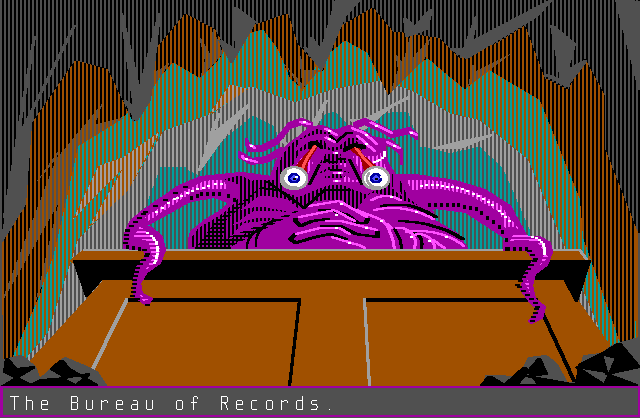
Just a few minutes ago, I released the first group of images from the Prodigy Preservation Project on Flickr. They’re screenshots from MadMaze, a vintage online game that ran on Prodigy Classic between 1989 and 1999.
Specifically, they’re all the graphics from the Place of Power instances in the game. I believe most, if not all, of the artwork was done by Al Sirois, a Prodigy staff artist. Al Sirois did some of the artwork, but Sirois says that most of it was created by other artists (see comments below). They originated as NAPLPS vector graphics (scalable to any size) and were captured into a raster format for display on the web.
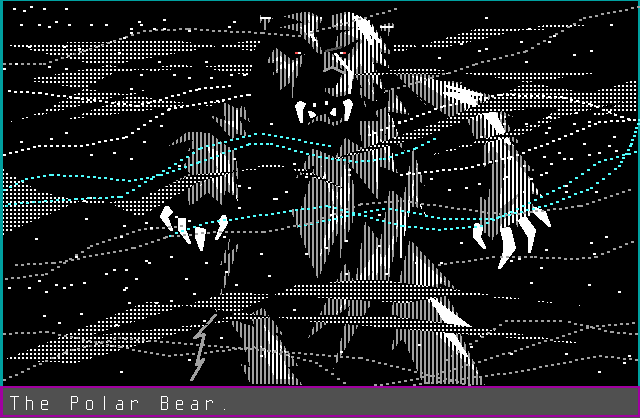
Of course, you can play a re-creation of MadMaze yourself on this very server right here. And you can read more about that re-creation (and report bugs you may encounter) here.
If you’d like to support the Prodigy Preservation Project and all of my history work, please consider submitting a pledge on Patreon. Any money I get from Patreon helps a ton toward giving me the extra time to work on history projects like the PPP.
Posted in BBS History, Computer Games, Computer History, Internet History, News & Current Events, Retrogaming, Vintage Computing | 16 Comments »
Tags: Al Sirois, Flickr, MadMaze, NAPLPS, online games, online history, Prodigy, Prodigy Preservation Project, screenshots
March 9th, 2017 by Benj Edwards
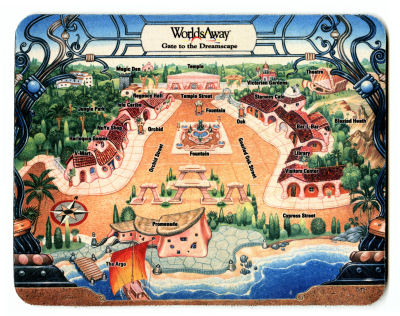 Echoes of Ancient Technicolor Greece
Echoes of Ancient Technicolor Greece
Back in 1995, CompuServe and Fujitsu launched a graphical online chat world called WorldsAway. I used it from the very start (at least within a month of the launch, I think), and quickly became enveloped in the beautifully illustrated world and the sense of community it fostered.
I’ve written in-depth about WorldsAway before — both on VC&G in a previous Retro Scan (for its first print ad) and in a “This Old Tech” column on PCWorld back in 2015.
Not long after the WA launch in 1995, Fujitsu held a contest on CompuServe that was simple to enter — you had to send an email or answer a short survey (forgot what it was exactly). Lucky for me, I won the contest, and I received a really cool package of WorldsAway-branded swag. I’ll try to remember everything: a sweatshirt, a pen, a clear acrylic coffee mug, a keychain flashlight, and the mousepad you see here.
The coolest thing about this mousepad is that it shows an illustrated overhead map of the Dreamscape/Kymer/whatever it was called as Fujitsu staff originally designed it. It stayed within its Greco-Roman-inspired theme. When WorldAway launched, only a handful of these locales were accessible — I think it wasn’t until 2000 or so that all of them were actually completed and opened to WA users (although I don’t really remember the Theatre opening up, but I quit in 2001).
Speaking of mousepads, while they were essential in the days of rolling-ball mice (some nice mouse history I wrote here), they are technically optional with today’s optical mice. But I still use one on my desk to provide a uniform surface for my Microsoft optical mouse.
[ From Fujitsu Cultural Technologies WorldsAway Mousepad, 1995 ]
Discussion Topic: Let’s talk about mousepads. When was the last time you used one?
Posted in BBS History, Computer History, Gaming History, Internet History, Regular Features, Retro Scan of the Week, Retrogaming, Vintage Computing | 12 Comments »
Tags: 1995, Fujitsu, Fujitsu Cultural Technologies, merchandise, online history, online worlds, Retro Scan, swag, WorldsAway
March 8th, 2017 by Benj Edwards
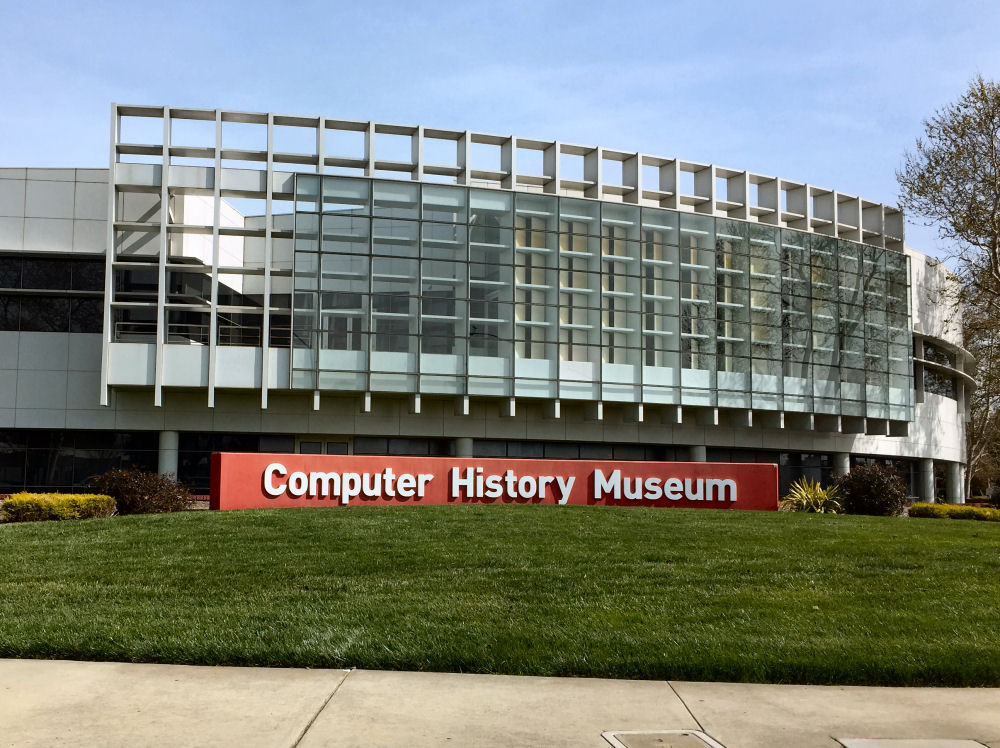 Last week I was in San Francisco for the Game Developers Conference, and I had a blast. I need to write more about that soon.
Last week I was in San Francisco for the Game Developers Conference, and I had a blast. I need to write more about that soon.
On Friday, I took a day trip down to Mountain View to visit the Computer History Museum, which I had not been to since 2006.
Aside from not having visited since they opened their first major exhibit, I am friends with the senior curator, Dag Spicer, and it was great to finally meet him face to face. I also met up with Allan Alcorn (creator of Pong) there, and we wandered around enjoying the exhibits together. That too is a story for another day.
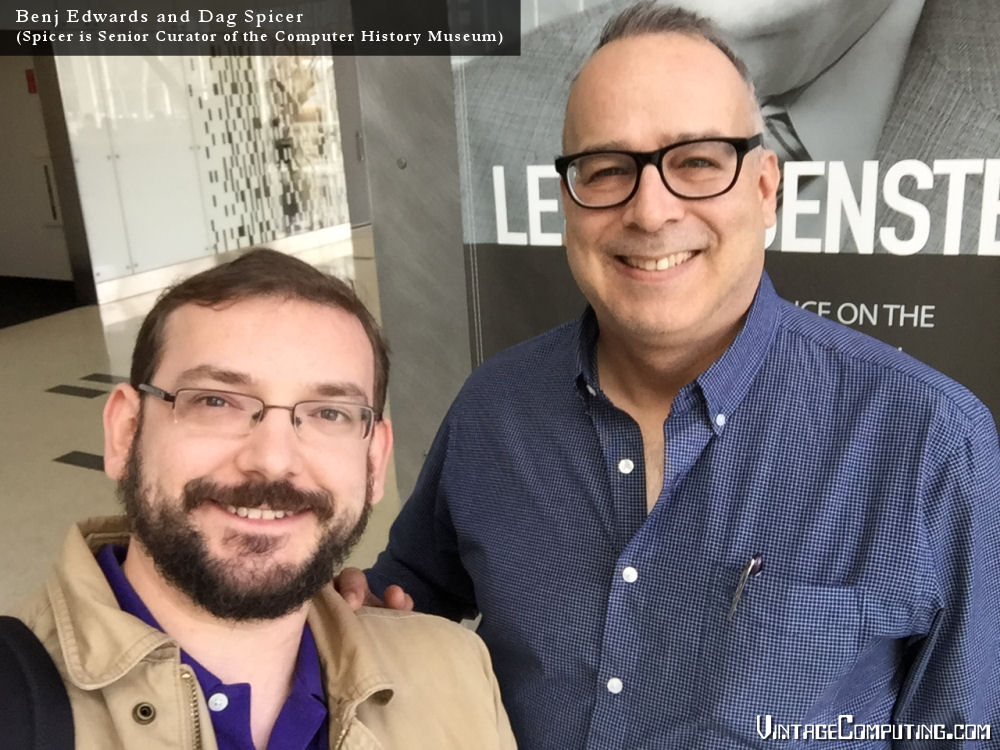 The CHM is a wonderful place, and the exhibits are top-notch. Just brilliant. No where else can you see the first mouse, the Pong prototype, the Atari 2600 prototype, the Community Memory machine, and so many more legendary artifacts.
The CHM is a wonderful place, and the exhibits are top-notch. Just brilliant. No where else can you see the first mouse, the Pong prototype, the Atari 2600 prototype, the Community Memory machine, and so many more legendary artifacts.
I also love it because there are bits and pieces of my work scattered throughout the place.
[ Continue reading “Retro Scan” Enshrined at the Computer History Museum » ]
Posted in Computer History, Gaming History, News & Current Events, Regular Features, Retro Scan of the Week, Retrogaming, VC&G Announcements, Vintage Computing | 4 Comments »
Tags: Al Alcorn, California, Computer History Museum, Dag Spicer, Retro Scan, slideshow





 There’s only one problem: Bob Mackey is still located on the west coast, and Jeremy can’t afford to fly out there every time he wants to record a show. So while Bob still creates episodes on the west coast, Jeremy started up a “Retronauts East” wing of the show featuring a local crew of regulars.
There’s only one problem: Bob Mackey is still located on the west coast, and Jeremy can’t afford to fly out there every time he wants to record a show. So while Bob still creates episodes on the west coast, Jeremy started up a “Retronauts East” wing of the show featuring a local crew of regulars.









